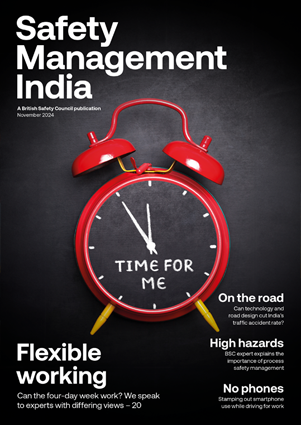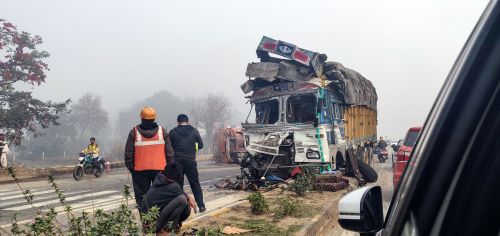Health and safety practitioners need to adapt their communication methods to suit the audience, otherwise important messages risk getting lost.
Features
Grab their attention
When I talk is anyone listening? I’m sure this thought regularly crosses the minds of occupational health and safety (OSH)practitioners when they launch into conversations about health and safety at work. Without good persuasion skills the message can be lost.
For years we’ve been pushing the health and safety message to employees, colleagues, business owners and even children. It could be said that we’ve overplayed our hand and there is little more to say on the subject, but I disagree. Safety practitioners need to ensure their communication is fit for purpose, effective and relevant to the subject as well as the recipient.
The role OSH professionals play in an organisation has never been so critical. Far from simply being a legal necessity, OSH professionals are playing a key
part in the recovery of many businesses as we emerge from the pandemic. However, more than ever, if they want to create a workplace culture where everyone is genuinely committed to excellent health and safety, they need to be effective communicators and not just merely seek to meet the minimum requirements of the law.
In my career as an OSH professional, I have always believed that if I find myself switching off from a health and safety briefing after 10 minutes then someone with less interest will have switched off at least five minutes earlier. So I’m sure I’m not alone in seeking out new methods and approaches to effectively communicate important OSH messages to everyone at work, regardless of their role or position in the organisation.
Keeping people interested
Any experienced and skilled public speaker will tell you that the key to keeping people’s interest is knowing your subject and ‘sensing’ your audience. This approach has never been truer than when you are trying to persuade directors, senior managers, colleagues and employees of the value of good health and safety.
I’ve spoken to many senior leaders who confidently say they fully understand their responsibilities to protect the health and safety of their workers and others. For some, this knowledge has come from attending a health and safety for directors course, and these courses do provide directors and managers with a solid baseline knowledge of the key legislative requirements and the human and business benefits of health and safety.
In fact, many of the leaders who attend these courses go on to become health and safety champions at board level – driving, leading and cajoling efforts to ensure their business is both properly managing the risks and going beyond the minimum and achieving OSH excellence.
 Phil Pinnington, audit and consultancy manager at the British Safety Council
Phil Pinnington, audit and consultancy manager at the British Safety Council
However, disappointingly, many senior leaders fail to keep up-to-speed with important health and safety legal updates and industry briefings about issues such as the latest good practice in risk management. Instead, many rely on their in-house competent person or an external consultant to filter through what is happening and give them the ‘headlines’.
Clearly, most senior leaders are extremely busy people but they have a crucial role in ensuring their organisation is properly managing risks and setting the tone and direction to ensure this actually happens. To do this, they need to fully understand the hazards and risks, be able to reach informed decisions about whether more resources, time and money need to be allocated to health and safety, and be able to assess if their organisation does in fact have a positive culture where safe and healthy working is at the forefront of everyone’s mind.
It is therefore crucial that OSH practitioners provide the board and senior team with the right information in a style and format that allows them to make informed decisions about whether more needs to be done to protect workers’ health and safety and the company’s public reputation as a safe and responsible business.
So, given that it has never been so important to properly communicate the need for, and benefits of, health and safety, why do many OSH practitioners continue to struggle to get the message across – especially with all the communications technology now at our disposal? Perhaps the simple answer is there are so many communication methods (such as talks, emails, training sessions, films, PowerPoint presentations etc), practitioners get tempted into using the slickest possible delivery even when it’s not appropriate for the audience – whether it’s a board or a team of fitters.
Personal and team drivers
In my experience, when an OSH practitioner thinks about how best to communicate with and convince an audience they need to go much further than just considering the culture of the organisation. They need to consider what might best encourage an individual or team to see health and safety as an important part of their role and responsibilities, and what might drive them to act on the knowledge provided.
In other words, what personal or team factors or drivers might positively influence someone to believe health and safety is of great importance and relevant to them, their role and their department or business function?
For example, all senior leaders have a main professional focus. The operations director will focus on the smooth running of various business functions, and the contracts director will seek to ensure the most efficient and cost-effective contract arrangements with the supply chain, service providers or customers. However, health and safety problems can both touch on and severely impact these areas – for example, if an injured worker is suddenly unavailable to complete a task that in turns affects an important customer relationship.
Despite this, the business consequences of poor management of health and safety risks are often either overlooked or not properly considered by leaders. Therefore, when communicating, OSH professionals should put health and safety into context for the audience and their responsibilities.
With leaders, this might mean highlighting the ramifications of accidents, incidents and dangerous occurrences for their area of responsibility. This can help to drive commitment to health and safety – for example, because an operations director subsequently decides to take steps to ensure their team have the training and resources to work safely and checks they are actually doing so.
However, as well as effectively communicating upwards, OSH practitioners have to think about how to effectively communicate with their colleagues. We currently have up to five generations in the workplace. Many Baby Boomers are still working and since the turn of the 21st century we have ‘Generation Z’.
The various generations are accustomed to different communication styles and methods and have different expectations of how managers and colleagues should communicate with them.
For example, some people expect to be told what to do while others expect a more collaborative approach. This poses another challenge for OSH professionals as failing to consider how best to communicate with the audience could result in workers failing to fully take on board crucial OSH information. More widely, getting the communication method, style and delivery wrong could mean that workers fail to take OSH risks seriously, simply because they do not listen to, become engaged with or understand what they are being told.
The Gen Z’s, as those born after 2000 are referred to, will often expect to communicate primarily using tech and will for example often find structured 9am–4pm training days extremely unusual. So, we may need to think about innovative ways of getting the message across to these groups.
OSH practitioners have a duty to ensure that suitable instruction and training is given to enable people to work safely, and we must ensure the message is delivered in a way our colleagues are best capable of understanding. The emergence of Covid-19 forced training providers like the British Safety Council to deliver large amounts of online training and the transition to electronic learning has been largely successful. This is clearly due to in large part to the level of technological literacy in the UK and global workforce.
However, we also need to recognise the impact of Covid-19 on our ability to discuss health and safety with our leaders, colleagues and the wider workforce. It’s extremely likely that many businesses and organisations will be in a state of flux at least until the end of 2022. Hybrid working looks set to become a permanent feature of working life, so we need to adapt our communication methods to get our message out because the hybrid model could pose new risks to workers’ health, safety and wellbeing.
For example, home workers who lack support from (and contact with) managers and colleagues can experience work-related stress, which can affect their mental health, and may struggle to manage their time, placing pressure on them to work longer hours.
So, OSH practitioners and employers need to think about how they can effectively look after the health, safety and, increasingly, the wellbeing of colleagues who may not be seen in person for weeks or months.
Again, good communication will be key. For instance, regular and direct contact with home workers can help managers to spot the signs of stress, but conversely, too many meetings and too much online contact can distract employees from their work, leading to stress and the need to work extra hours to make up the lost time.
In conclusion, I think more than ever we have an attentive audience, who genuinely want to hear messages about safe working and the role they can play in keeping themselves and others healthy and safe.
But OSH professionals must ensure they are providing their audience with information that is relevant to them and their role and captures their attention in the long term. Indeed, those organisations that are getting the health and safety message right are seeing real improvements in stakeholder engagement and commitment.
Phil Pinnington is audit and consultancy manager at the British Safety Council


FEATURES
Why changes to recycling legislation in England are an opportunity, not a burden
By on 12 November 2024

Road safety in India: could better road safety, vehicle technology and enforcement make driving for work safer?
By Orchie Bandyopadhyay on 10 November 2024
India has a poor road safety record, and research shows that commercial vehicles are a major contributor to the problem, with trucks estimated to be the single largest vehicle type involved in impacts leading to fatalities. We look at solutions that could make driving for work and the roads in general safer – from in-vehicle technology that warns truck drivers about unsafe behaviour to improving the design features of major highways.

